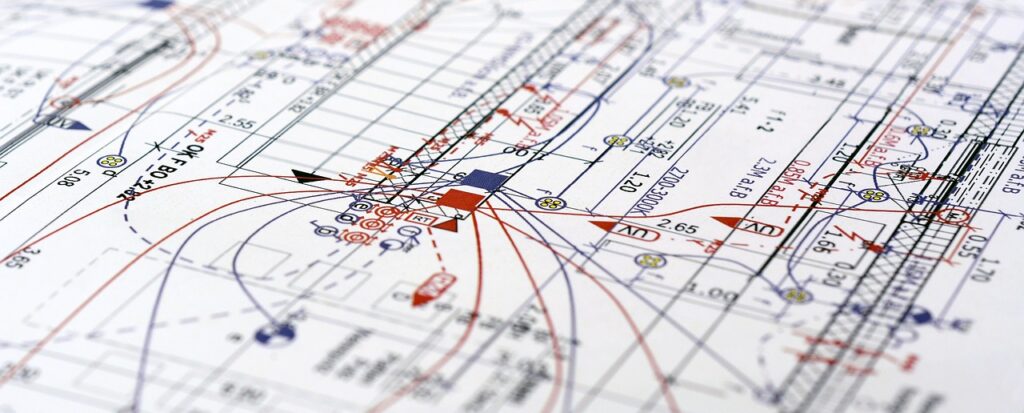Introduction
Electrical systems are at the core of modern infrastructure. Whether powering homes, industries, or institutions, well-designed electrical installations ensure safety, efficiency, and long-term reliability. In Kenya, the demand for quality electrical design continues to rise as the country expands in housing, industrial growth, and renewable energy adoption. Understanding best practices in electrical design is critical for engineers, contractors, and clients who want reliable electrical systems that support both present and future needs.
Understanding Professional Electrical Design in Kenya
Electrical design involves planning and creating electrical systems that are safe, efficient, and functional. In Kenya, adherence to local codes and standards is essential. Understanding these requirements ensures that installations not only comply with regulations but also function reliably. Poorly designed systems increase the risks of electrical fires, equipment failure, and high maintenance costs. By following best practices, engineers can ensure reliable electrical systems that enhance safety, efficiency, and sustainability.
Reliable electrical systems are critical for both residential and commercial applications. They reduce the risk of electrical failures, enhance safety, and lower maintenance costs. By implementing best practices in electrical design, you can achieve systems that meet these criteria.
Key Principles for Electrical Design
1. Adherence to Kenyan Standards and Regulations
Compliance is the foundation of safety. The Energy and Petroleum Regulatory Authority (EPRA) sets clear guidelines, along with global standards such as the International Electrotechnical Commission (IEC), Institute of Electrical and Electronics Engineers (IEEE Standards), and BS 7671 – IET Wiring Regulations (UK). These rules govern all electrical installations. Ignoring them invites legal trouble and physical danger. Consistent adherence ensures that electrical design in Kenya aligns with international benchmarks for safe and reliable electrical systems.
2. Conducting Accurate Load Analysis and Planning
Understanding your power needs is essential. Therefore, begin every project with a detailed load analysis. Calculate the total connected load and factor in diversity for realistic demand. This prevents overloading circuits and ensures your distribution boards and cables are correctly sized. Accurate load planning is the heart of effective electrical design in Kenya, directly creating more reliable electrical systems. Without this crucial step, even advanced installations risk frequent tripping, inefficiency, and potential hazards.
3. Implementing Robust Protection Systems
Safety devices are your first line of defense. They protect both people and assets. Every circuit needs precise overcurrent protection, which includes circuit breakers and fuses. Crucially, install Earth Leakage Circuit Breakers (ELCBs) to prevent fatal electric shocks. Additionally, ensure a low-resistance earth electrode system, as proper earthing is vital for reliable electrical systems. Effective protection systems make electrical design in Kenya both resilient and compliant with safety requirements.
4. Selecting High-Quality Materials and Components
Always specify quality-approved materials. Do not compromise on wires, MCBs, or sockets. Use products bearing the KEBS Standardization Mark. Cheap, substandard imports may seem economical but can overheat, degrade, and fail prematurely. Investing in quality components is a core tenet of good electrical design in Kenya. This enhances the longevity of your reliable electrical systems and significantly reduces maintenance costs. Ultimately, high-quality materials deliver safety, performance, and peace of mind for users.
5. Incorporating Surge Protection Devices (SPDs)
Kenya experiences power fluctuations and lightning strikes, sending destructive surges through lines. SPDs are essential for diverting excess voltage to the ground. Install SPDs at the main distribution board and consider point-of-use devices for sensitive electronics. This protection is critical for modern reliable electrical systems, safeguarding expensive equipment from damage. Including SPDs in electrical design in Kenya is a proactive step toward uninterrupted and secure power.
6. Ensuring Clear Labeling and Detailed Documentation
An invisible system is a dangerous one. Every circuit breaker, fuse, and isolator must be clearly labeled. This is crucial for emergency response and maintenance. Furthermore, maintain detailed as-built drawings and schematics. This documentation provides a roadmap for your installation. It is a best practice often missed in electrical design in Kenya but is vital for supporting long-term reliable electrical systems. Well-prepared records also reduce downtime during troubleshooting and upgrades.
7. Planning for Future Expansion and Scalability
A great design accommodates future growth and avoids obsolescence. Always allocate spare ways in distribution boards and plan conduit routes for easy cable additions. This foresight prevents expensive retrofits later. Scalability is a hallmark of superior electrical design in Kenya. It builds truly reliable electrical systems that are ready for tomorrow’s demands. Future-ready designs make investments more cost-effective and sustainable over time.
8. Integrating Renewable Energy Solutions
Solar power is a key part of Kenya’s energy mix. Designing systems to integrate solar is now a best practice. This includes designing for hybrid inverters and solar-ready distribution boards. It also involves ensuring safe islanding and grid interaction. Smart electrical design in Kenya embraces sustainability. It creates resilient and reliable electrical systems that not only reduce costs but also support Kenya’s transition to clean energy.
Hiring Qualified Professionals
Always ensure that you hire qualified professionals for electrical design and installation. Experienced engineers understand the nuances of electrical design in Kenya and can ensure that your systems comply with local regulations. Selecting the right engineering partner is critical. Professional firms combine technical expertise, compliance knowledge, and practical experience to deliver reliable electrical systems. Engaging experts reduces risks, optimizes energy use, and ensures compliance with regulatory standards. For clients in Kenya, this translates to safe and sustainable investments.
Partner with SelteQ Engineering for Your Next Project
At SelteQ Engineering, we specialize in professional electrical design in Kenya. Our expertise ensures safe, efficient, and future-ready installations for residential, commercial, and industrial projects. Achieving safe and reliable electrical systems demands precision and a deep understanding of electrical design in Kenya. You need a partner who masters these best practices. Here, we live and breathe these principles. Our team of certified engineers delivers world-class electrical design services, ensuring your project is safe, efficient, and fully compliant.
Do not leave your electrical design to chance. Contact SelteQ Engineering today for a consultation. Let us engineer a safer, more powerful tomorrow for you.

